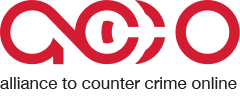The Specifics
Because of the wide range of wildlife species being traded, it’s hard to determine the full scale of online markets where animals and their parts are traded. Taken together, multiple studies in recent years have logged millions of social media posts, groups, and pages where wildlife goods are illegally sold.
A 2020 ACCO study found that most wildlife trading on Facebook takes place in the open; groups and pages that operate as markets for live animals and wildlife products don’t bother to disguise their purpose, meaning the firm is failing to impose its own community standards.
The 2020 study also found that 58% of the Facebook pages or groups had the term “sale,” “sell” or “buy” in their title, meaning the firm could utilize simple “if” code to identify and block these pages and groups. Many images showed animals in clear signs of distress.
The World Parrot Trust, an ACCO member, reports that online platforms have enabled traders to procure birds and other animals more efficiently and also expand their networks and consumer base, contributing to the collapse of key African parrot populations.
A 2017 investigation by CINTOC, an ACCO member, identified multiple ivory traffickers operating internationally, connecting to and communicating with customers entirely through social media.
Former Facebook moderators who joined ACCO in filing a whistleblowers complaint to the U.S. government there are hundreds of private and secret groups where animal torture video and images are sold and traded.
Multiple ACCO members have developed cutting-edge machine-learning tools able to single out wildlife traffickers operating on social media, but firms have been slow to adopt such available technology.
